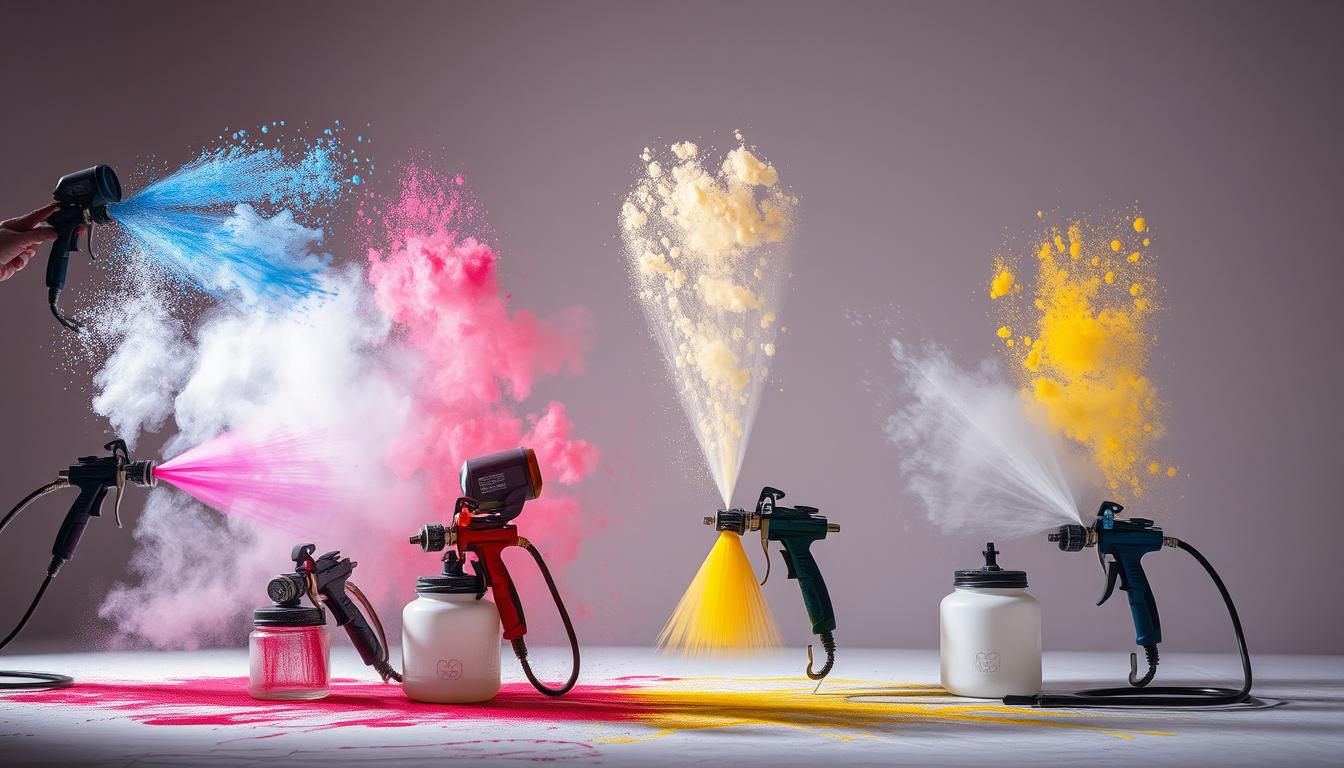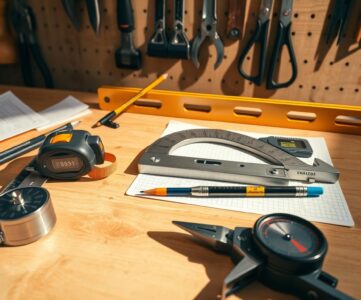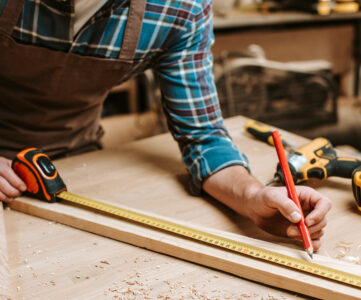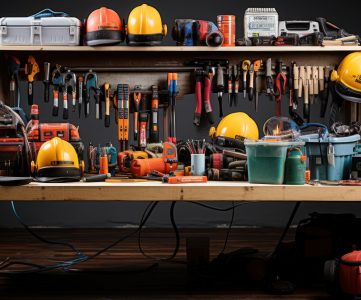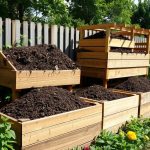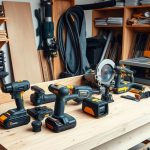Welcome to our comprehensive guide on mastering paint sprayers. We’ll guide you through achieving professional-looking results with efficient paint spraying and spray painting techniques. Whether you’re a DIY enthusiast or a professional, understanding the basics and advanced techniques of paint spraying is crucial for a successful project.
Paint spraying and spray painting are essential skills for any project. With the right knowledge, you can achieve stunning results. Our goal is to provide you with the necessary information to become proficient in using paint sprayers, from setup to cleanup.
In this guide, we’ll cover the fundamentals of paint spraying. This includes the different types of paint sprayers and the necessary safety precautions. By mastering paint spraying and spray painting, you’ll be able to tackle any project with confidence.
Key Takeaways
- Understanding the basics of paint spraying and spray painting is crucial for a successful project
- Mastering paint sprayers requires knowledge of different types and safety precautions
- Efficient paint spraying techniques can achieve professional-looking results
- Paint spraying and spray painting are essential skills for any DIY or professional project
- Our guide will take you through the process of paint sprayer mastery, from setup to cleanup
- By following our guide, you’ll become proficient in using paint sprayers and achieve stunning results
Understanding Paint Sprayers: Types and Technologies
There are various paint sprayer types, each with distinct features and advantages. Knowing the different sprayer types is essential for picking the ideal tool for your project. We will examine the main types, including HVLP and airless systems, and guide you on how to select the best one for your needs.
The primary distinction between HVLP and airless systems is their operating mechanism. HVLP systems employ a high volume of air at low pressure to atomize paint, leading to a smooth finish. In contrast, airless systems operate by pumping paint through a small nozzle at high pressure, resulting in a fine spray pattern.
Key Characteristics of Sprayer Types
- HVLP systems: high volume, low pressure, smooth finish
- Airless systems: high pressure, fine spray pattern, fast application
When selecting a paint sprayer, consider the power sources and capabilities of each type. Some sprayers run on electricity, while others use compressed air or gas. The appropriate sprayer for your project hinges on the job’s size and complexity, as well as your personal preference and experience.
By grasping the various sprayer types and their attributes, you can make an informed choice. Whether you’re a seasoned contractor or a DIY novice, the right paint sprayer is crucial for achieving a top-notch, professional finish.
| Sprayer Type | Power Source | Capabilities |
|---|---|---|
| HVLP | Electricity | Smooth finish, low overspray |
| Airless | Compressed air or gas | Fast application, high pressure |
Essential Safety Measures and Workspace Preparation
When working with paint sprayers, safety is paramount. Proper equipment care is key to avoiding accidents and maintaining a healthy workspace. This involves using and maintaining your paint sprayer and other tools correctly.
To ensure a safe and successful painting experience, follow some essential guidelines. Here are some tips to get you started:
- Read the manufacturer’s instructions carefully before using your paint sprayer
- Wear protective gear, including gloves, safety glasses, and a mask
- Ensure the workspace is well-ventilated and free from flammable materials
- Regularly maintain the paint sprayer and other equipment through equipment care
By adhering to these guidelines and taking necessary precautions, you can reduce accident risks. Remember, equipment care is vital in the painting process. It’s crucial to take it seriously.
By prioritizing safety and taking the necessary precautions, you can enjoy a successful and stress-free painting experience. Always follow the manufacturer’s instructions and take good care of your equipment. This ensures a long and trouble-free life.
Paint Sprayer Components and Assembly
Understanding your paint sprayer’s components is key to its proper function. Familiarize yourself with the parts and learn how to assemble it correctly. This involves grasping various sprayer techniques related to assembly and calibration, which we’ll cover here.
The paint sprayer consists of the nozzle, hose, and pump. Each part is vital for the sprayer’s performance. The nozzle atomizes the paint, while the hose carries it from the container to the nozzle.
Main Parts and Their Functions
- Nozzle: Atomizes the paint for a smooth finish
- Hose: Transports paint from the container to the nozzle
- Pump: Generates pressure to push the paint through the hose and nozzle
Assembling your paint sprayer requires following the manufacturer’s instructions. Always wear protective gear, like gloves and safety glasses. Also, make sure your workspace is well-ventilated.
Assembly Steps and Checks
After assembling your paint sprayer, test and calibrate it. This ensures it’s working as it should. Check the pressure, flow rate, and spray pattern to meet the recommended specifications.
Preparing Your Materials for Optimal Results
To get professional-looking results with your paint sprayer, preparing your materials is key. This means making sure your surfaces are ready for painting and using the right materials for even coverage. A well-prepared surface is crucial for a smooth, uniform finish.
When preparing your surfaces, think about the material you’re working with. Different materials need specific preparation to ensure even coverage. For instance, wood surfaces might need sanding for a smooth finish. Metal surfaces might require a primer for better paint adhesion.
Choosing the right materials is also essential for the best results. This includes picking the right paint, primer, and other coatings. Consider the color, finish, and durability you want. By preparing your materials and surfaces well, you can get a professional-looking finish with even coverage.
Some key considerations for preparing your materials include:
- Surface preparation: cleaning, sanding, and priming surfaces as needed
- Material selection: choosing the right paint, primer, and other coatings for your project
- Workspace preparation: ensuring your workspace is clean, well-ventilated, and free from debris
By following these steps and preparing your materials well, you can achieve even coverage and a professional-looking finish with your paint sprayer.
Paint Sprayer Techniques for Professional Results
Mastering spray painting demands a thorough grasp of several techniques. These ensure even coverage and a professional finish. Key areas include distance and speed control, overlap patterns, and avoiding common mistakes.
Proper distance between the sprayer and the surface is crucial. It impacts the paint deposition and finish quality. Controlling the sprayer’s speed allows for a smooth, even coverage without streaks or marks.
Distance and Speed Control
Practicing on a test surface is essential for mastering distance and speed control. Adjust these variables until you get the desired finish. This skill is vital for achieving professional results with spray painting.
Overlap Patterns
Effective overlap patterns are critical for even coverage. Overlap each pass by about 50% to ensure complete coverage. This prevents bare spots and uneven paint layers.
Avoiding Common Application Mistakes
When spray painting, avoid applying too much paint to prevent drips and runs. Also, ensure each coat dries fully before applying the next. By following these techniques and avoiding common pitfalls, you can achieve a professional finish with spray painting. This results in a beautiful, even coverage.
| Technique | Description |
|---|---|
| Distance Control | Maintaining the right distance between the sprayer and the surface |
| Speed Control | Adjusting the speed of the sprayer for a smooth finish |
| Overlap Patterns | Creating effective overlap patterns for even coverage |
Achieving Even Coverage and Perfect Finish
To achieve even coverage with a paint sprayer, several factors come into play. These include the type of paint, the sprayer’s settings, and the environment. Understanding these elements and applying the right techniques will lead to consistent, high-quality results.
Some key tips for even coverage include:
- Using the right nozzle size for your project
- Adjusting the sprayer’s pressure and flow rate
- Maintaining a consistent distance and speed while spraying
Preparing your surface properly before painting is also crucial. This involves cleaning the surface, filling holes or cracks, and applying a primer if needed.
By adhering to these tips and techniques, you can achieve even coverage and a perfect finish. Always read the manufacturer’s instructions and follow safety guidelines for a successful painting experience.
Troubleshooting Common Paint Sprayer Issues
Even with the best preparation and techniques, issues can arise during paint spraying. To ensure a smooth paint application process, it’s essential to identify and address common problems promptly. Proper equipment care is crucial in preventing these issues and providing solutions when they do occur.
Some common problems encountered during paint spraying include pressure issues, clogging, and pattern inconsistencies. Understanding the causes and solutions to these problems will help you handle any challenges that come your way. For instance, regular equipment care can help prevent clogging, while adjusting the spray nozzle can resolve pattern inconsistencies.
To troubleshoot common paint sprayer issues, consider the following steps:
- Check the spray nozzle and filter for any blockages
- Adjust the pressure settings to achieve a smooth paint application
- Clean and maintain the paint sprayer regularly to ensure proper equipment care
By following these steps and practicing proper equipment care, you can minimize the risk of common paint sprayer issues. This will help you achieve a professional-looking finish with your paint application.
Maintenance and Cleaning Your Paint Sprayer
Proper equipment care is crucial for extending your paint sprayer’s life and maintaining its performance. Regular maintenance and cleaning prevent clogs, corrosion, and other issues. These problems can significantly affect the sprayer’s efficiency.
It’s advisable to clean your paint sprayer after each use. Flush the system with a cleaning solution and wipe the exterior with a soft cloth. Also, regularly inspect and replace the sprayer’s filters and nozzles as needed.
Here are some tips for maintaining and cleaning your paint sprayer:
- Always follow the manufacturer’s instructions for cleaning and maintenance
- Use a soft cloth to wipe down the exterior and avoid scratching the surface
- Check the sprayer’s filters and nozzles regularly and replace them as needed
By adhering to these guidelines and dedicating time to proper maintenance and cleaning, you can extend your paint sprayer’s lifespan. Remember, regular equipment care is essential for optimal performance.
Conclusion: Mastering Your Paint Sprayer for Long-term Success
Mastering your paint sprayer is a journey that requires understanding various sprayer types and techniques. This guide has covered the essential steps for achieving professional results. From setting up your sprayer to cleaning it, we’ve provided detailed information.
By following our practical tips and guidelines, you’ll be on the path to success in painting projects. Remember, consistent practice and a commitment to improvement are crucial. As you hone your skills, you’ll be able to handle a wide range of projects with confidence.
Embrace the journey of mastering your paint sprayer. Let your creativity and expertise shine in every stroke. With dedication and a focus on excellence, you’ll transform any surface into art. Your work will leave a lasting impression, impressing clients and peers alike.
